Dr. Tiatoshi Jamir of Nagaland University shares insights on careers in archaeology and preserving Naga ancestral heritage.
Published on Jul 29, 2025
Share
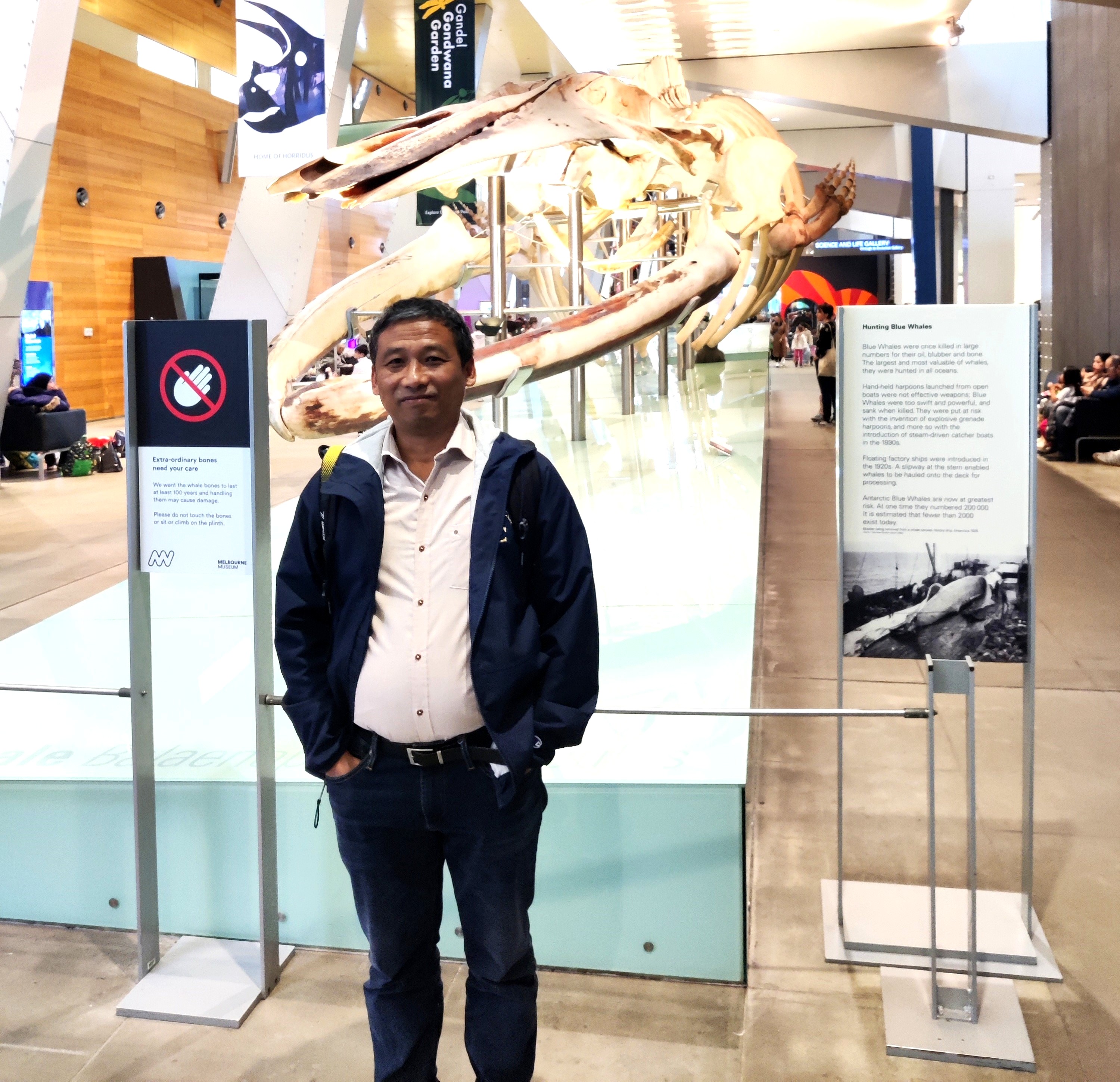
DIMAPUR — Dr. Tiatoshi Jamir, professor in the Department of History and Archaeology at Nagaland University, Kohima Campus, has dedicated close to two decades to uncovering the prehistoric roots and cultural heritage of Northeast India through pioneering archaeological research and academic leadership.
His early schooling was partly in Shillong at St. John’s School, Whitehall, Umpling in the early 1980s, while he later completed his high school in Kohima at Charles D King School, Jotsoma. Thereafter, he pursued his Pre-University at Kohima Science College, Jotsoma, and completed his B.Sc. in Anthropology (Major) from the same college.
Encouraged by his teachers in the Department of Anthropology at Kohima Science College to pursue further studies in Archaeology, he then moved to Pune for his Master’s in Archaeology from Deccan College (Post-Graduate and Research Institute), Pune. He later received his PhD degree in Mortuary Archaeology from the same institute under the mentorship of Prof. K Paddayya, a recipient of the Padma Shri in Archaeology and a world-respected archaeologist whose research is internationally acclaimed, particularly in the field of theoretical archaeology.
Since 1999, he has been engaged in teaching and research in the Department of History and Archaeology, Nagaland University, Kohima Campus, with an administrative component, having served as Head of Department from 2018 to 2021.
As a Mercator Fellow under the German Research Foundation, he was visiting professor at the Institute of Pre-and-Protohistoric Archaeology, Kiel University, Germany (2022), and was also a recipient of the Kalicharan Brahma National Award (2023) from the Department of Cultural Affairs, Government of Assam, for his contribution towards research on the tribal heritage of Northeast India.
Also read: Gaming Passion into Profession: Insights from KRAFTON’s Karan Pathak
For close to two decades, he has been engaged in archaeological research on Naga ancestral sites, focusing on the emergence of vegeculture/agriculture, village settlements, material culture, and social complexities. He has undertaken multidisciplinary research with national and international institutions and co-published with colleagues on topics such as the ethnoarchaeology of Naga stone monuments and mortuary practices; time, archaeology and oral tradition; community archaeology and decoloniality; lithic technology and the ethno-technology of iron production; bioarchaeology of jar/pit burials and symbolic representations in the material world; the zooarchaeology and archaeobotany of Naga ancestral sites and prehistoric cave sites; palaeoclimate and archaeology; soil micromorphology and cave archaeology. At present, a substantial number of radiocarbon dates and other data have been generated for most of the sites investigated by his team and fellow colleagues from the Department of History and Archaeology, Nagaland University.
More recently, as part of joint collaborative research with colleagues from North-Eastern Hill University (NEHU), Tura Campus; Union Christian College (UCC), Barapani; Directorate of Archaeology, Assam; the University of Melbourne; and the Australian National University, his interest has turned to the enigmatic culture of the Stone Jars of North Cachar Hills, Assam (Dima Hasao) and the Saipung forest of Meghalaya, East Jaintia Hills, and their historical linkages to the Plain of Jars, Laos. Recent excavations were also conducted on the Neolithic lithic production sites of West Garo Hills, Meghalaya, jointly with colleagues from NEHU, Tura Campus.
Currently, his primary region of practice is Northeast Indian prehistory, covering the states of Nagaland, Assam, and Meghalaya. Future collaborative research with various institutions aims to incorporate other states of Northeast India, including Arunachal Pradesh, Manipur, Mizoram, and Tripura, with the objective of examining evidence of early prehistoric migration to mainland Southeast Asia via the corridor of Northeast India.
In this interview with Eastern Mirror, Dr. Jamir provides a roadmap for young individuals, particularly from Nagaland, aspiring to pursue a career in archaeology.
How would you explain Archaeology to young readers?
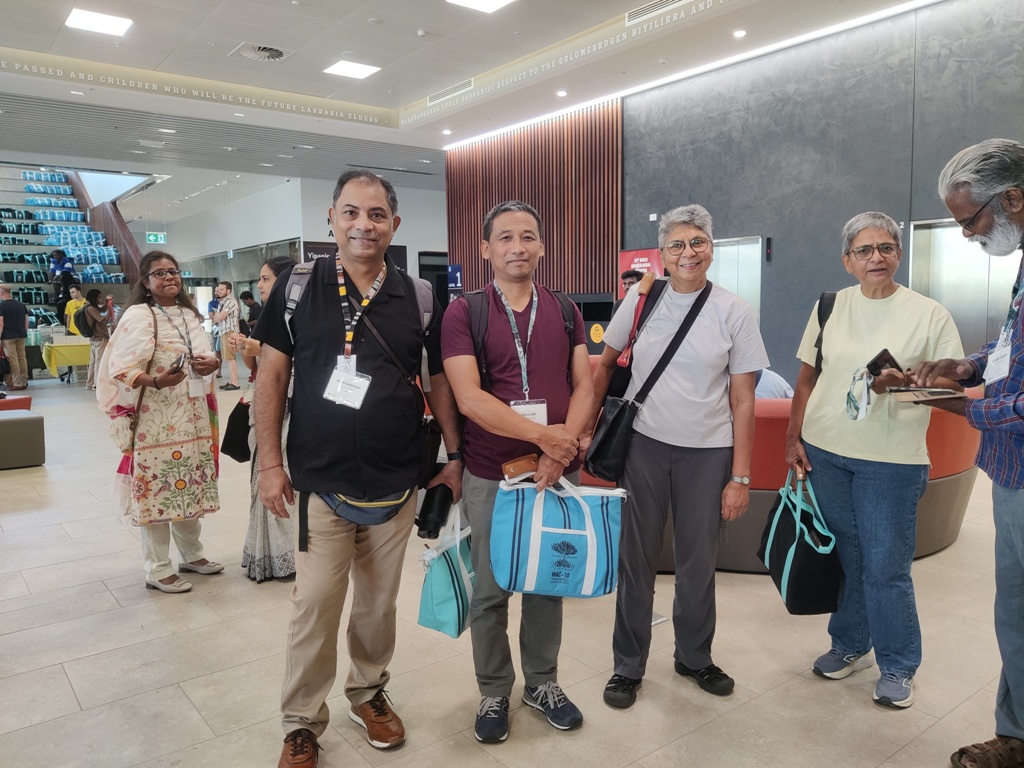
From its antiquarian stage of merely collecting objects for curiosity’s sake, or what in Europe was known as Dillettantism (amateur ways of engaging with a particular field of knowledge, such as the portrayal of Indiana Jones in “Raiders of the Lost Ark”), modern archaeology today has evolved into a mature scientific discipline to study and tell the human story from the material remains left behind by the people in the past.
A simple analogy may be drawn from the modern ways of human lives. Every day we discard things or build things around us. Discerning in terms of centuries and millennia away into the future, these discarded objects or structures that now lie crumbled or demolished get buried over time to form what archaeologists would call “sites” with multitudes of complex layers of human activity. Essentially, that’s what archaeologists in the future would study: what we today discard or build in order to understand human behaviours and the way we perceived our worlds. Just like if you picture the place you lived today – the objects/structures (name any trash surviving the vestiges of time – mobile phones, plastics, cans, bottles, glass, metal pots and pans, metal scraps, charcoals/ashes, residential structures, bridges, etc.) we utilised should be able to tell a story of the human experience to archaeologists in the future.
And for archaeologists to systematically recover what was discarded requires, in particular, a slow and methodical excavation technique. This aid in the recovery of remnants of the past in order for archaeologists to examine and understand the nature of patterning in the “archaeological record” and infer what actually happened in the past.
Nowadays, there are several high-tech tools for archaeologists to accurately record the excavation process of an archaeological site. Computer-aided technology has really revolutionised archaeological excavation to collect more data than ever before, utilising total stations, GNSS (Global Navigation Satellite System), GPR (Ground Penetrating Radar), LiDAR (Light Detection And Ranging), drone technology, AIS (Airborne Imaging Spectroscopy), GIS (Geographic Information Systems) and many more.
How does one become an archaeologist?
To pursue a career in archaeology, beginning with a Master’s Degree and a PhD in Archaeology, an under-graduate must obtain a Bachelor’s Degree with core papers in Ancient Indian History and Archaeology or Bachelor’s Degree in Anthropology/Fine Arts/Architecture; or Bachelor’s Degree in Geology, Geography, Botany, Zoology, Chemistry, and Physics.
This is a conventional pathway. However, as a practitioner, one needs to be practising and teaching Archaeology either in a college or university and undertaking one's own individual research with the aim to contribute to the production of new knowledge. Otherwise, one could be working professionally in government/private agencies such as in museums as curators, heritage managers, or consultants in heritage departments for overseeing projects related to site/monument conservation and management; or an archaeologist working as a tour operator under archaeo-tourism sectors; or if one possesses the skills in archaeology photography, one could be engaged as an archaeological photographer/illustrator creating visual documentation of archaeological sites and monuments with the help of photogrammetry tools.
Why is it important for students in Nagaland to learn about their own history and heritage through archaeology?
Although archaeology as a discipline is deeply entrenched in colonialism and was utilised as a weapon against the colonies by requisitioning our artefacts through a “might is right” attitude; ironically, today, it’s the same discipline that’s serving Indigenous people across the world to reconnect with their precolonial ancestral past and their heritage. The responsibility, therefore, lies on us to safeguard the heritage passed onto us if we are to preserve our cultural identity and help foster a sense of belonging amongst Naga communities.
In doing so, as Indigenous people, we should be able to transform the way we do archaeology that is relevant and meaningful to us. I am of the strong conviction that this transformed archaeological practice that we engage in will serve as a response to the ongoing decolonisation process in the various disciplines across the sciences, social sciences and the humanities.
What are the key specialisations that students can pursue in Archaeology?
At the level of Masters and PhD programmes, Archaeology offers a wide range of specialisations. Broadly categorised by time period and methodological approaches, these key specialisations include Prehistoric Archaeology, Classical Archaeology, Mediaeval Archaeology, Historical Archaeology, and Underwater Archaeology, as well as methodological fields such as Geoarchaeology, Zooarchaeology, Archaeobotany, Bioarchaeology, Archaeogenetics, and Archaeometallurgy. Additionally, emerging areas like Digital Archaeology, Ethnoarchaeology, Community or Public Archaeology, and Museology and Heritage Management are also prominent within advanced study.
Which are the institutions in India offering specialisations in Ancient Indian History and Archaeology and other diploma courses in allied fields?
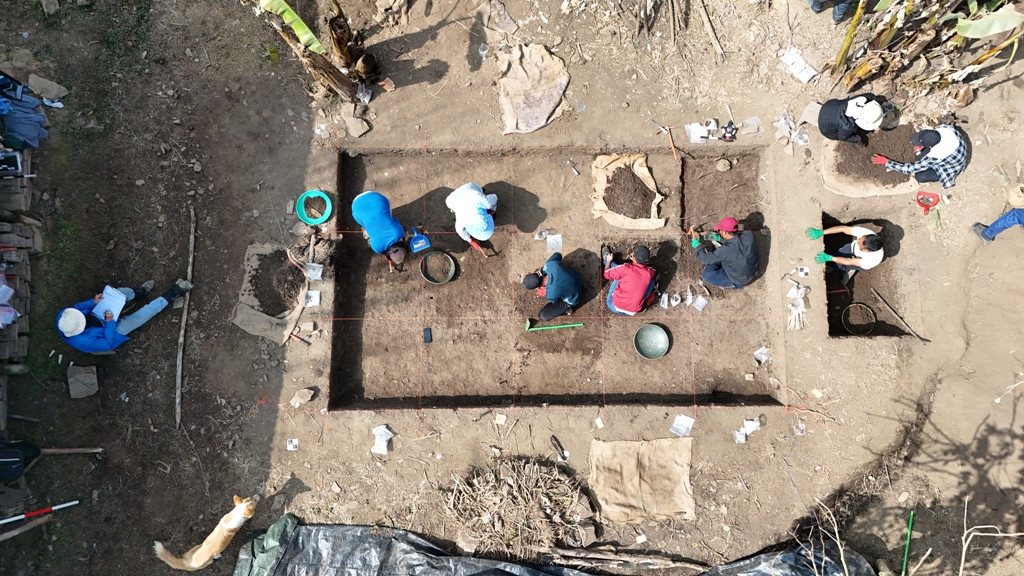
Institutions in India offering post-graduate courses in Archaeology are:
Deccan College (Post-Graduate and Research Institute), Pune.
Department of AIHC and Archaeology, Banaras Hindu University, Varanasi, UP.
Department of Archaeology and Ancient History, MS University of Baroda, Vadodara, Gujarat.
Department of History and Archaeology, Nagaland University, Kohima Campus.
Department of Archaeology, Cotton State University, Guwahati.
Department of History and Archaeology, NEHU, Tura Campus.
Department of Ancient History and Archaeology, Manipur University.
Department of Archaeology and Ancient Indian Culture, Tripura University.
Department of History and Archaeology, Karnatak University, Dharwad, Karnataka.
Department of Archaeology, Calcutta University.
School of Archaeology, Nalanda University, Nalanda District, Bihar.
Centre of Central Asian Studies, University of Kashmir, Srinagar.
Department of Archaeology, University of Kerala, Kariavattom Campus, Thiruvananthapuram, Kerala.
Department of Epigraphy and Archaeology, Tamil University, Thanjavur.
Indian Institute of Heritage (formerly National Museum Institute), Deemed to be University, Ministry of Culture, Noida.
In addition, with the completion of a Master’s degree in Ancient History and Archaeology, students may opt for a PG Diploma professional course offered by different institutions like:
Deccan College (Post-Graduate and Research Institute), Pune: 1-year full-time post-graduate diploma courses in Underwater Archaeology/Heritage Sites Management and Scientific Conservation.
Pandit Deen Dayal Upadhyay Institute of Archaeology, Archaeological Survey of India, Delhi: 2-year full-time post-graduate diploma in Archaeology.
Tamil Nadu Institute of Archaeology and Museology: 2-year full-time post-graduate diploma in Archaeology.
National Institute of Professional Promotion Skills: 1-year online post-graduate diploma in Archaeology.
Department of AIHC and Archaeology, Banaras Hindu University, Varanasi, UP: 2-year full-time post-graduate diploma in Archaeology.
Other certificate courses and internships:
Sharma Centre for Heritage Education, Chennai: Offers certificate courses and internships in Prehistoric Archaeology and Public Education on Indian Heritage.
MS University of Baroda, Vadodara, Gujarat: 1-year full-time PG diploma in Museology.
IGNCA, Ministry of Culture, New Delhi: 1-year full-time PG diploma in Applied Museology.
IGRMS, Bhopal: 1-year full-time P.G. diploma in Museology.
University of Mysore: 1-year full-time PG diploma in Museology, Tourism, and Heritage.
Can you share a memorable archaeological discovery from Nagaland?
Our excavation back in 2009 inside a limestone cave called ‘Ranyak Khen’ at the base of the rugged and steep limestone terrain of the Mimi area was a very memorable one. Here we unearthed early traces of human habitation in the cave, who were using edge-ground tools, bone tools, and handmade pottery dependent on a hunting-gathering and fishing economy since 4500 BCE (AMS date).
Alongside, we also excavated a pit burial with the disarticulated remains of a young sub-adult male individual. This was indeed a very remarkable and exciting discovery for the team. Studies are on to examine the ancient DNA of this individual, which would tell us more of his genetic ancestry.
If a student is fascinated by archaeology, what’s the best way for them to start exploring these fields?
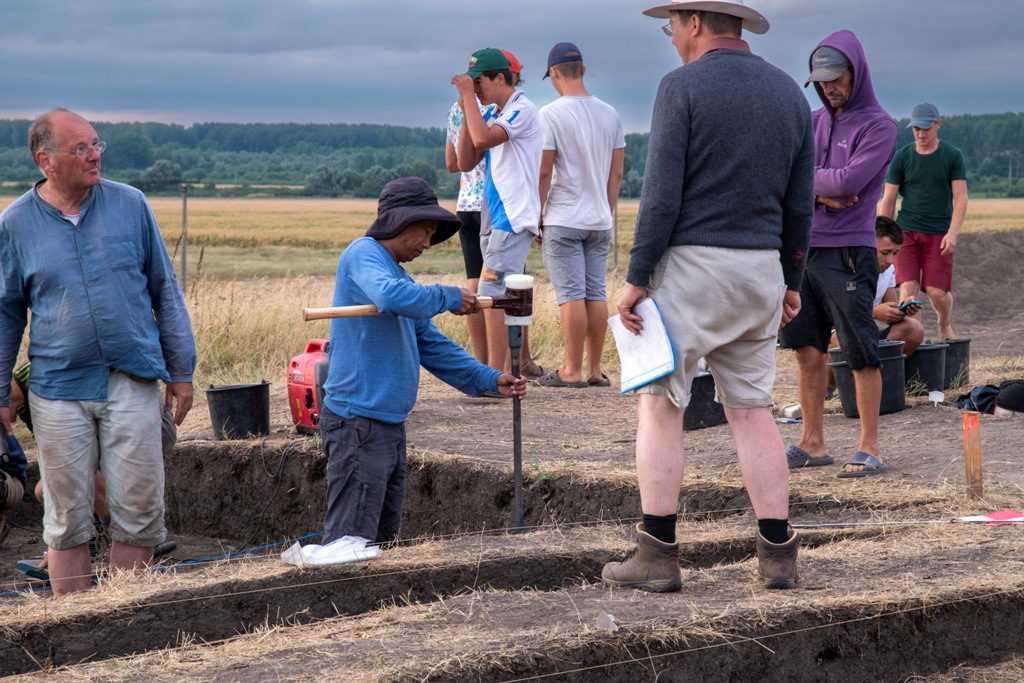
At present, neither Nagaland University nor its constituent colleges across Nagaland run an independent department of Archaeology at either the Under-Graduate or Post-Graduate level. Hence, opting for a few core papers in Ancient Indian History and Archaeology early on in the Under-Graduate course in History (Major/Hons) and a deep dive into the fundamentals of archaeology is essential.
If possible, an early start at hands-on practical training in the principles of excavation in the Under-Graduate is advantageous to develop skills, inculcate scientific temperament, and draw students’ interest to the exciting world of engaging and bringing archaeology to the field, a learning activity beyond their regular classroom-based curriculum.
What undergraduate and postgraduate courses do you recommend for students aiming to become an archaeologist?
For undergraduates, a Bachelor’s degree in History, preferably with Ancient Indian History and Archaeology papers as electives, is recommended. In addition, an Under-Graduate Degree in Anthropology, Sociology, Fine and Visual Arts, Architecture, Geology, Geography, Botany, Zoology, Chemistry, or Physics are some of the preferred bachelor’s courses.
Undergraduates with these qualifications may pursue programmes such as:
Sharma Centre for Heritage Education, Chennai: Offers certificate courses and internships in Prehistoric Archaeology and Public Education on Indian Heritage.
MS University of Baroda, Vadodara, Gujarat: 1-year full-time PG diploma in Museology.
IGNCA, Ministry of Culture, New Delhi: 1-year full-time PG diploma in Applied Museology.
IGRMS, Bhopal: 1-year full-time PG diploma in Museology.
University of Mysore: 1-year full-time PG diploma in Museology, Tourism, and Heritage.
Degree in Ancient Indian History and Archaeology, Museology, or Heritage Management. This will later transition to a PhD degree in any specialised field of Archaeology and allied fields such as Museum Studies and Heritage Management/Conservation.
Which subjects or extracurricular activities in school will give aspiring archaeology students a strong foundation?

Subjects like Geology, Geography, Biology, Physics, Chemistry, Anthropology, Sociology, Logic and Philosophy, and History are some typically viable subjects in the higher secondary schools.
Extracurricular activities such as sports, including rock climbing, hiking and camping (integrated with learning activities such as map-reading and surveying using a compass and handheld GPS), learning survival skills embedded in one’s Indigenous knowledge, visual arts, photography, creative writing, community service and social skills such as participating in community engagement activities (e.g., social work/public speaking).
Which non‑academic career paths are open to graduates?
Museum curators; archaeological consultants for government agencies or private companies specialising in impact assessment of heritage sites threatened by infrastructural development projects and mitigation plans for effective heritage management; entrepreneurs in archaeo-tourism, such as managing and organising tours to archaeological sites; digital specialists in Digital Archaeology projects; conservators specialising in monument conservation, metal artefacts, stone tools, wood artefacts, graffiti removal, etc.; archaeological photographers; and archaeology laboratory technicians analysing artefacts, sediments, dating objects, aDNA analysis, and more.
What single piece of advice would you give to a student deciding to pursue Archaeology as a career?
Learning how to learn is an exciting journey but also extremely challenging. I think in today’s professional parlance, while the practical skills of undertaking modern archaeological excavations are an important attribute that an archaeologist must possess, above all, it is a sound intellect that will nurture one to rise above mere mediocrity and amateurism in the ways of doing archaeology.
So much has advanced in modern archaeology today. Our Naga boys/girls possess natural inherent manual skills, which is indeed an essential component in field archaeology, particularly in the laborious and tedious excavation process. Such skills, however, are just an end in themselves if we fail to integrate them within a critical thinking mode of pedagogical learning. Hence, the conceptual understanding of the discipline and its praxis becomes an equally important component.
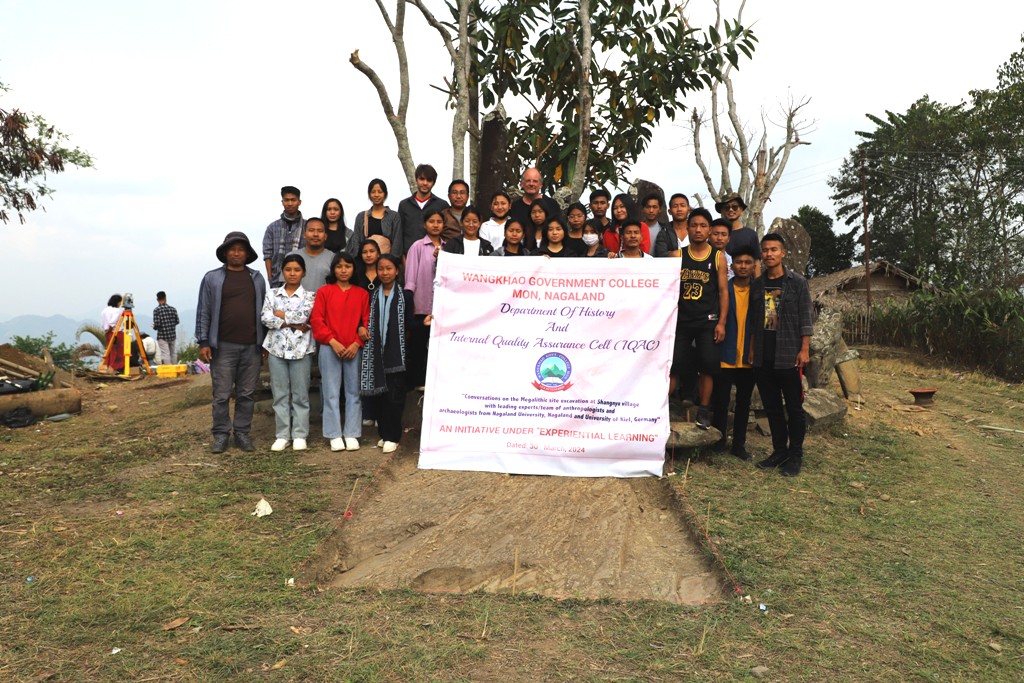
RAPID INSIGHTS
Your favourite archaeological site in Nagaland—and why?
The Para Naga ancestral site is remotely located close to the Myanmar border, a 4-5 hour trek from Hakkomute village. It’s a phenomenal site with its unique fascinating structures – stone monuments, ritual platforms, rock shelters, remnants of residential structures, pot burials, etc.
The local topography is rugged, rocky and commanding, offering a picturesque view of the river Tizu downhill. My team, assisted by the local community of the area, has documented at least 29 clusters of pot burial from the rock shelters of this site and successfully rescued a log coffin for the State Museum, Kohima, for their newly installed Nagaland Archaeology Gallery. Because of its almost pristine state of preservation, the site might be christened as the “Machu Picchu” of the Northeast. Hopefully one day, this site should draw the attention of the state government for its archaeo-tourism potential, as the region offers tremendous potential with few other significant caves and rockshelter sites reported from the same region by my team.
One book you think every young historian should read.
The book “What Happened in History (1942)” authored by V Gordon Childe. It is without doubt an old publication but a must-read for both non-academic and young graduate students of History/Archaeology.
A question you’d love to ask your younger self.
If it wasn’t a career in archaeology, what might have been my choice of an alternative career path?